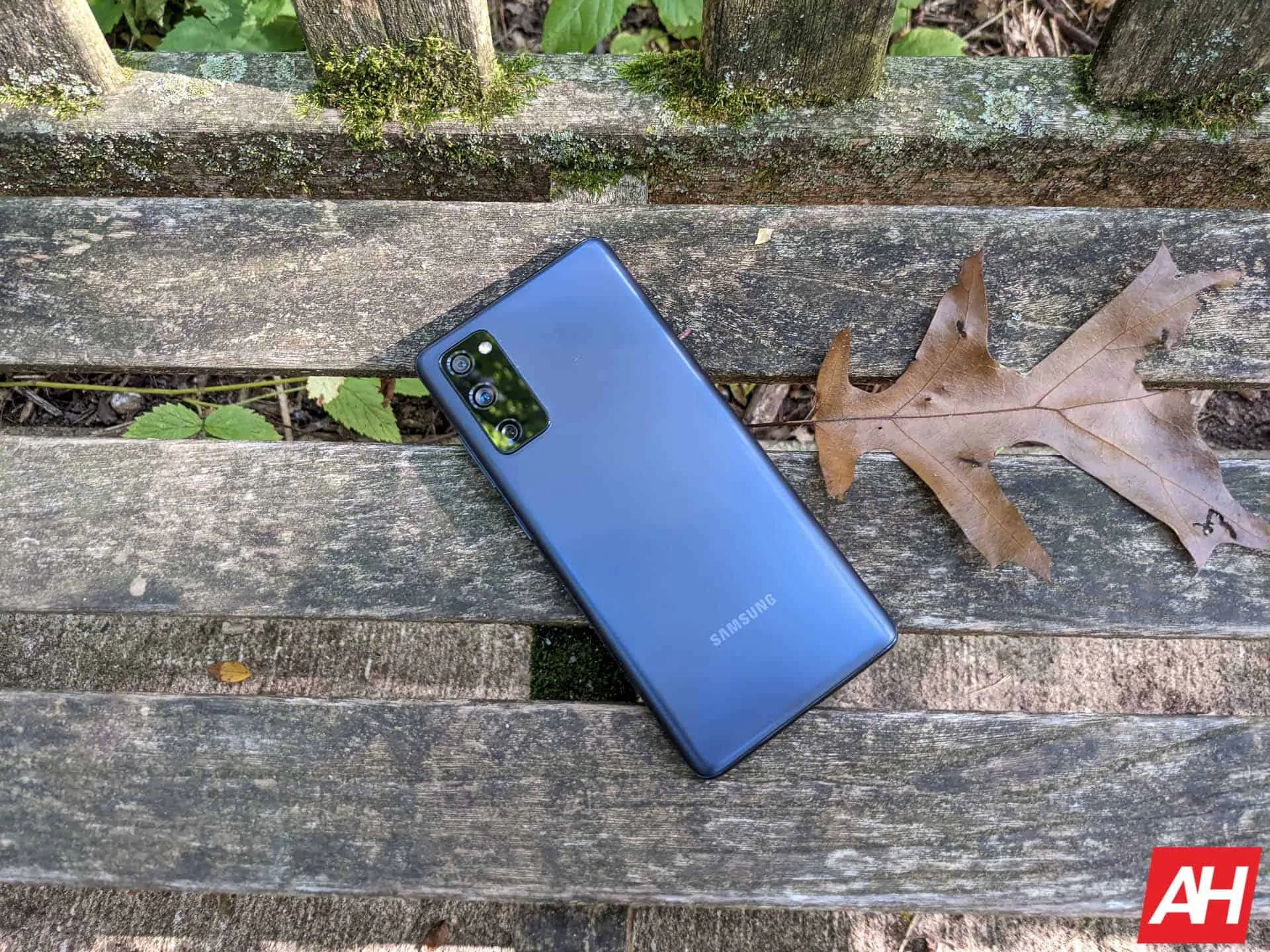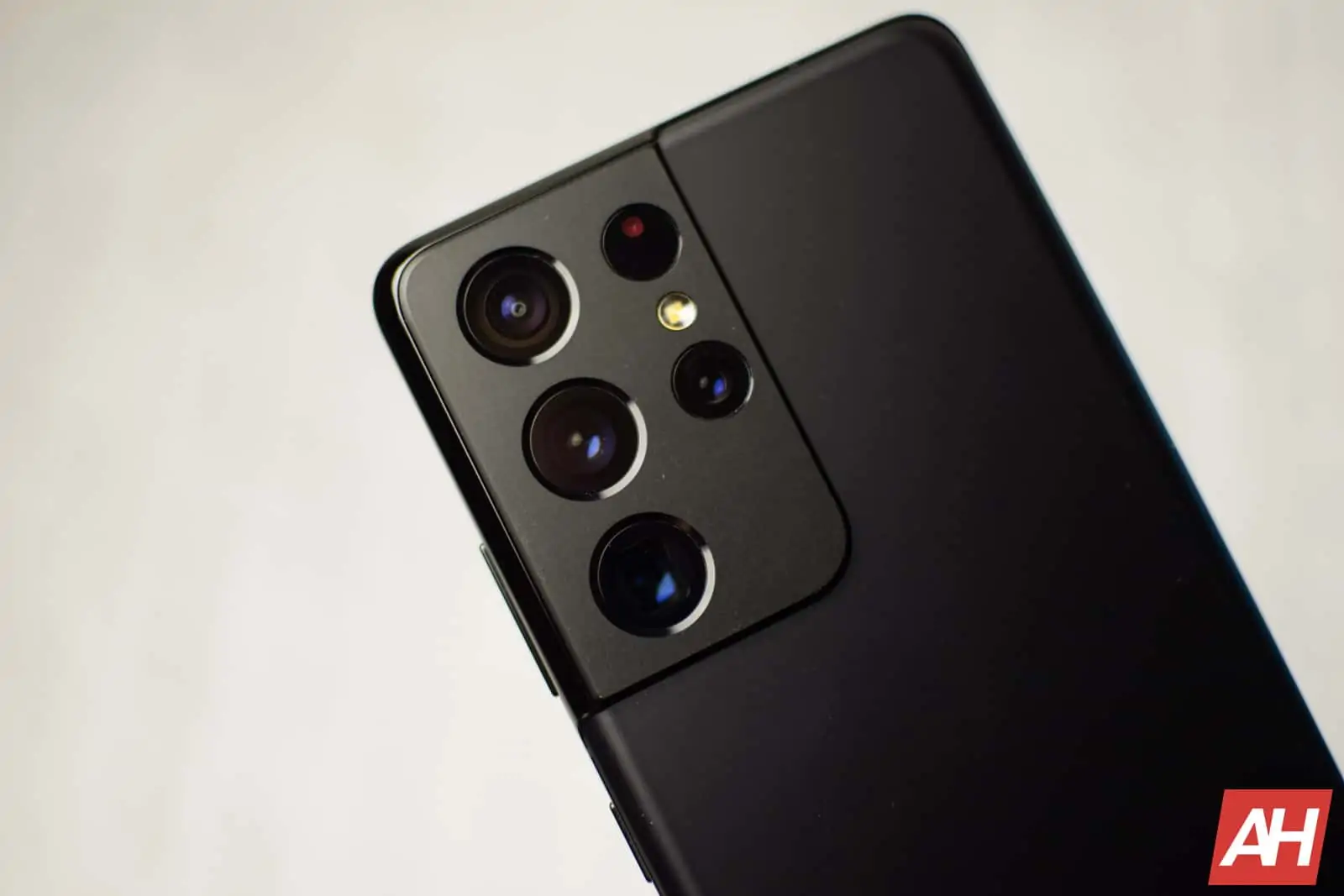Samsung has announced quite a few compelling smartphones in the last year or so. In this article, we’ll compare two of them, the Samsung Galaxy S21 Ultra vs Samsung Galaxy S20 FE. Both of these phones are quite compelling in their own right, but there are quite a few differences between them. The Galaxy S20 FE is the company’s “budget flagship” that got announced last year. The Galaxy S21 Ultra, on the other hand, is the most premium offering Samsung announced this year.
The Galaxy S21 Ultra is a generation ahead of the Galaxy S20 FE, but it’s also considerably more expensive. Is the extra price tag worth it, though? Well, that’s something we’ll try to help you answer for yourself, based on this article. We’ll compare the two phones across a number of categories, and let you be the judge. We’ll kick things off by listing their specifications, and move to the design, display, performance, and several other categories after that. Having said that, let’s kick off the Samsung Galaxy S21 Ultra vs Samsung Galaxy S20 FE comparison.
Specs
| Samsung Galaxy S21 Ultra | Samsung Galaxy S20 FE | |
| Screen size | 6.8-inch WQHD+ Dynamic AMOLED 2X display (120Hz adaptive refresh rate) | 6.5-inch fullHD+ Super AMOLED display (120Hz) |
| Screen resolution | 3200 x 1440 | 2400 x 1080 |
| SoC | Qualcomm Snapdragon 888 / Samsung Exynos 2100 | Qualcomm Snapdragon 865 |
| RAM | 12GB/16GB (LPDDR5) | 6GB (LPDDR5) |
| Storage | 128GB/256GB, non-expandable (expandable in some countries) | 128GB; Non-Expandable |
| Rear cameras | 108MP (f/1.8 aperture, OIS, 0.8um pixel size. Produces 12MP images with 2.4um pixel size) 12MP (ultrawide, Dual Pixel AF, 120-degree FoV, f/2.2 aperture, 1.4um pixel size) 10MP (telephoto, Dual Pixel AF, OIS, f/2.4 aperture, 1.22um pixel size, optical zoom 3x) 10MP (telephoto, Dual Pixel AF, OIS, f/4.9 aperture, 1.22um pixel size, 10x optical zoom, 100x Space Zoom) |
12MP (f/1.8 aperture, 1.8um pixel size, Dual Pixel AF, OIS) 12MP (f/2.2 aperture, 123-degree FoV, 1.12um pixel size, ultrawide) 8MP (f/2.4 aperture, 1.0um pixel size, telephoto, 3x optical zoom, OIS) |
| Front cameras | 40MP (f/2.2 aperture, 80-degree FoV, 0.7um pixel size, PDAF) | 32MP (f/2.2 aperture, 80-degree FoV, 0.8um pixel size) |
| Battery | 5,000mAh, non-removable, fast battery charging (USB PD 3.0), Fast Wireless Charging 2.0, Wireless PowerShare | 4,500mAh, non-removable, 25W wired charging, 15W wireless charging, Wireless PowerShare |
| Dimensions | 165 x 75.6 x 8.9 mm | 159.8 x 74.5 x 8.4mm |
| Weight | 229 grams | 190 grams |
| Connectivity | 5G, LTE, NFC, Bluetooth 5.2, Wi-Fi, USB Type-C | 5G, LTE, NFC, Bluetooth 5.0, Wi-Fi, USB Type-C |
| Security | In-display fingerprint scanner (ultrasonic) | In-display fingerprint scanner (optical) |
| OS | Android 11 One UI 3.0 |
Android 10 One UI 2.5 (upgradable) |
| Price | $1,199.99 | $699 |
| Buy | Samsung | Samsung |
Samsung Galaxy S21 Ultra vs Samsung Galaxy S20 FE: Design
When it comes to the design, these two phones may seem very similar to you. Well, granted, they do look somewhat similar, but there are quite a few differences. For starters, Samsung did not use the same build materials here. The Galaxy S20 FE may seem like it’s built out of metal and glass, but that’s not the case, as Samsung did not use glass on its back side. It used metal for the frame, but there’s plastic on the back. That’s contrary to what the Galaxy S21 Ultra offers.

Is the lack of glass on the back of the Galaxy S20 FE a big deal? Not at all. In fact, the plastic on the back of the phone feels really good, and it’s more resistant to shattering. On the flip side, it’s more prone to scratches, so… it’s your call what’s more important to you. Speaking of which, you may want to use a case with both of these phones, as both are quite slippery. The Galaxy S21 Ultra is definitely more difficult to manage due to its size, and curved display, but both are fairly large and slippery.
Both phones have thin bezels, and a centered display camera hole. Bezels on the Galaxy S21 Ultra are thinner, though. Their rear camera modules are placed in the same spot, but they’re different in size, and look different as well. The one on the Galaxy S21 Ultra feels more premium as it’s an extension of the phone’s frame. The Galaxy S21 Ultra is taller, wider, and thicker than the Galaxy S20 FE. On top of that, it’s also considerably heavier.
Samsung Galaxy S21 Ultra vs Samsung Galaxy S20 FE: Display
Both of these phones have fairly large displays, and both are very good. The Galaxy S21 Ultra’s, however, is better both on paper and in real life, though that was to be expected. The Galaxy S21 Ultra features a 6.8-inch QHD+ (3200 x 1440) Dynamic AMOLED 2X display with an adaptive refresh rate (10Hz-120Hz). That display is protected by the Gorilla Glass Victus, the latest protection from Corning. That panel can also project HDR10+ content, and it gets very bright (1,500 nits peak brightness).
The Galaxy S20 FE’s display is no joke either, quite the contrary. The phone features a 6.5-inch fullHD+ (2400 x 1080) Super AMOLED display with a 120Hz refresh rate. Its refresh rate is not adaptive, though. This panel can also project HDR10+ content, and it’s well-protected, but not with the latest offering from Corning. That display gets plenty bright as well, and it’s also quite sharp, but not as sharp as the Galaxy S21 Ultra’s.
In real-life comparison, the Galaxy S21 Ultra’s display is visibly better, but that’s expected. If not placed side-by-side, though, not many people would notice the differences, as both are excellent. You’ll be getting excellent, vivid colors on both displays, while both offer great viewing angles as well. Those deep AMOLED blacks are also a part of both panels. In fact, these two panels are amongst the best QHD+ and fullHD+ displays on the market.
Samsung Galaxy S21 Ultra vs Samsung Galaxy S20 FE: Performance
What about the performance, is it good? It definitely is. Samsung has come a long way with its software, and it paired that up with truly powerful hardware in these two smartphones. The Galaxy S21 Ultra is technically a more powerful smartphone, as it comes with both newer and more powerful internals. The phone is equipped with the Snapdragon 888 SoC, compared to the Snapdragon 865 inside the Galaxy S20 FE. It also offers more powerful RAM, while both come with UFS 3.1 flash storage.
Now, these differences are not something you’d notice in regular day-to-day usage, not at all. Both phones breeze through everyday tasks like butter. They are almost equally excellent when it comes to opening / closing apps, consuming multimedia, browsing, and so on. They perform great in all those areas. Where you may notice a slight difference in gaming. Still, the Galaxy S21 Ultra may load games a bit faster, but both will perform great in that regard. Pretty much every game that is available for Android will work well on both smartphones, without lagging or anything of the sort.
Samsung Galaxy S21 Ultra vs Samsung Galaxy S20 FE: Battery
In regards to the battery life, well, both are quite good, but the Galaxy S21 Ultra has the advantage. The Galaxy S21 Ultra does come with a larger battery pack, but that’s only a part of the reason why it offers better battery life. The phone features a 5,000mAh battery pack, compared to a 4,500mAh battery inside the Galaxy S20 FE. The Galaxy S20 FE does include a smaller, lower-res display, so the change makes sense.
Both phones can offer over 6 hours of screen-on-time, for most users, though the Galaxy S21 Ultra goes above and beyond that. Getting over 7 hours of screen-on-time is easy with the Galaxy S21 Ultra. Some users may even get two days of battery life from the device, to be quite honest. That adaptive refresh rate in combination with the power-efficient Snapdragon 888, and Samsung’s optimizations are doing wonders for the Galaxy S21 Ultra battery life. Do note that the Exynos 2100 is inferior in terms of battery life, so European and Indian units will offer different battery life. Your mileage will also vary, of course.
Both phones offer the same charging support. You’ll get support for 25W fast wired charging on both devices, and support for 15W wireless charging. 5W reverse wireless charging aka Wireless PowerShare is also included here. Do note that the Galaxy S21 Ultra does not ship with a charger, so that’s something you’ll need to buy separately if you don’t have one at home already. You can charge it on slower chargers, of course, but in order to take advantage of 25W charging, you’ll need a proper charger.
Samsung Galaxy S21 Ultra vs Samsung Galaxy S20 FE: Cameras
What about the cameras? Well, they’re both really good in that department, but the Galaxy S21 Ultra has the advantage. The Galaxy S21 Ultra is probably one of the most versatile camera smartphones in the market. It can do it all. It has all the main camera types you’d expect, in addition to an excellent periscope camera. The phone comes with four cameras on the back, led by a 108-megapixel camera.

The Galaxy S20 Ultra came with some camera issues out of the box, most notably with focusing issues. None of that is the case with the Galaxy S21 Ultra, as Samsung polished it before launching the device. The phone can take extremely detailed shots, and it does an excellent job in low light as well. The ultra-wide camera is good in all conditions as well, while the periscope camera is probably the best out in the market now.
The Galaxy S20 FE’s camera performance is really good, but a notch below the Galaxy S21 Ultra. The Galaxy S20 FE can take really good images in all lighting conditions as well, and it has the three main camera types you’d expect as well. It does a good job in low light, in case you’re wondering. The Galaxy S21 Ultra outshines its sibling in terms of camera quality, but both are really good.
Audio
When it comes to audio, you’ll get extremely similar results here. Both phones are equipped with stereo speakers which are tuned by AKG. In fact, the whole audio experience is tuned by AKG. None of the two phones have a 3.5mm headphone jack, so keep in mind you’ll either have to use a dongle, or hook up your headphones via Bluetooth. The sound is excellent, no matter if we’re talking about the speakers, or sound via headphones.
You’ll get a clean and crisp sound from this smartphone. The speakers do get quite loud, while you won’t notice any distortion unless you turn the volume all the way up, and even then it’s almost not noticeable. The sound via headphones is also quite good, presuming your headphones are good. It’s actually good across the spectrum.

